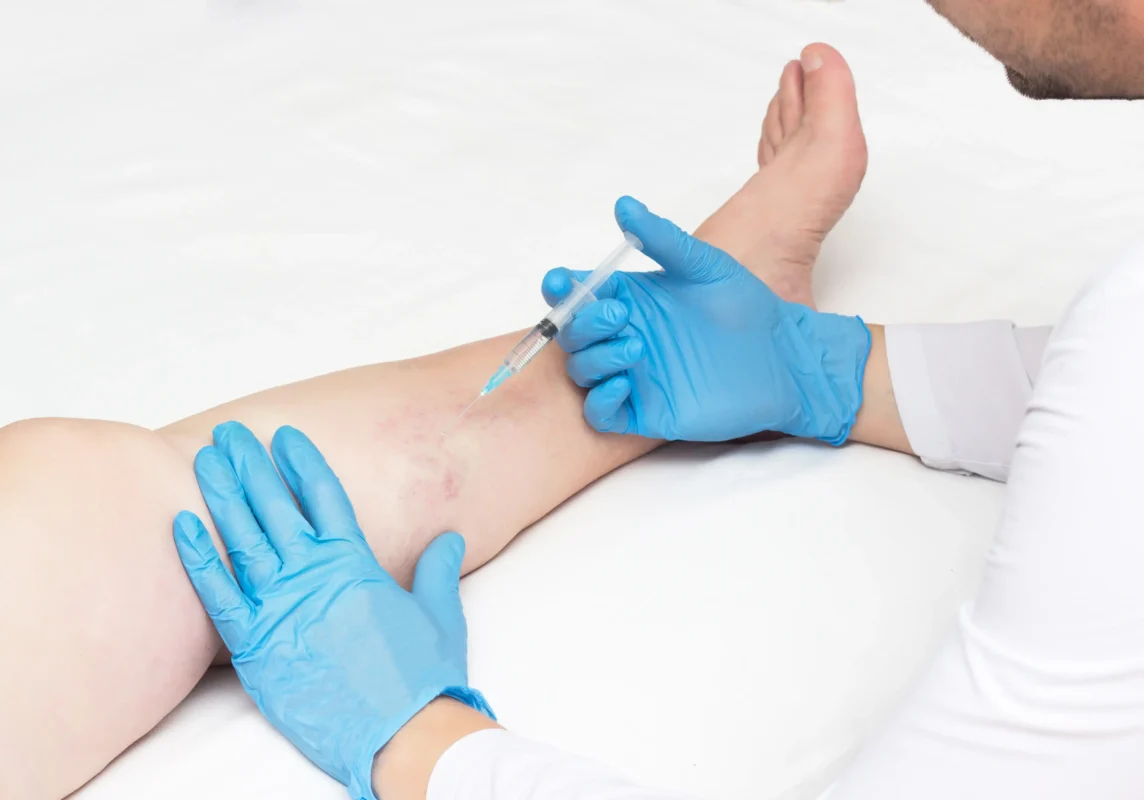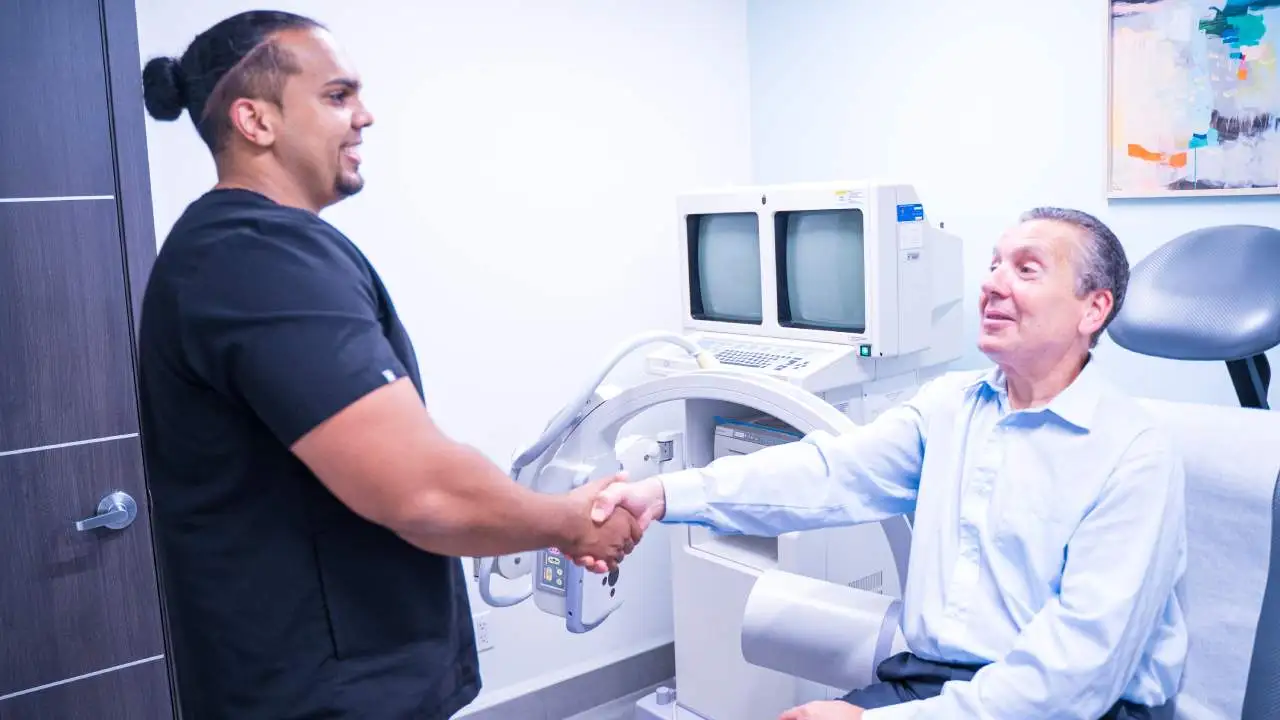You’ve noticed those twisting, bulging veins on your legs for a while now. At first, they were easy to ignore—just a cosmetic concern, you thought. But lately, your legs feel heavy and achy, and you’re starting to wonder if these varicose veins might be more than just an eyesore. Are they trying to tell you something about your health?
At Vein Treatment Clinic, we understand the importance of addressing varicose veins promptly. Many individuals wait too long, thinking their symptoms are harmless or simply aesthetic. However, varicose veins can often be a sign of a more serious condition known as chronic venous insufficiency (CVI). By recognizing the signs and seeking timely vein treatment, you can prevent complications and maintain your vein health.
What Are Varicose Veins?
Varicose veins are swollen, twisted veins that usually appear on the legs. They occur when the valves in your veins, which help regulate blood flow, become weakened or damaged. This leads to blood pooling in the veins, causing them to enlarge and become visible under the skin. While many people associate varicose veins with an unsightly appearance, they can also indicate venous insufficiency—a condition where the veins are unable to return blood to the heart.
Chronic venous insufficiency is more than just a cosmetic issue. It can lead to serious complications if left untreated. These include skin changes, ulcers, and even blood clots. Therefore, it’s crucial to recognize when your varicose veins are signaling something more serious. Let’s explore the signs and symptoms that indicate when to worry about varicose veins and seek medical attention.
Leg Pain and Discomfort
One of the most common signs that your varicose veins may be more than a cosmetic concern is persistent leg pain. If your legs feel heavy, achy, or sore, particularly after standing or sitting for long periods, this could be a sign of venous insufficiency. The pain often worsens as the day goes on, and you might find relief only when you elevate your legs. This discomfort occurs because the blood is pooling in the veins, increasing pressure and causing inflammation.
Swelling in the Legs and Ankles
Swelling in the legs and ankles, known as edema, is another symptom that should not be overlooked. Edema occurs when excess fluid accumulates in the tissues due to poor circulation. Varicose veins often cause this condition because the weakened valves in the veins allow fluid to leak into surrounding tissues. If you notice swelling, particularly at the end of the day or after prolonged periods of standing, it’s a sign that your veins are struggling to function properly.
Skin Changes and Discoloration
Skin changes and discoloration are signs that your varicose veins have progressed beyond a cosmetic issue. When blood pools in the veins, it increases pressure, which can cause the skin to become thin, discolored, and prone to ulcers. You may notice brown or blue discoloration, particularly around the ankles. The skin might also become dry, itchy, or leathery. If left untreated, they can lead to venous ulcers—painful, open sores that are difficult to heal. So, this is a guide on when to worry about varicose veins.
Restless Legs Syndrome
Restless Legs Syndrome (RLS) is a condition characterized by an uncontrollable urge to move your legs, often accompanied by uncomfortable sensations such as tingling, itching, or a crawling feeling. While RLS can have various causes, it’s commonly associated with venous insufficiency. The connection between RLS and venous insufficiency is thought to be related to poor circulation and increased pressure in the veins. Treating the underlying vein condition can often alleviate the symptoms of RLS.
Itching or Burning Sensations
Itching or burning sensations around varicose veins are common symptoms that can indicate inflammation or irritation of the skin. These sensations occur because the blood pooling in the veins can cause the surrounding tissue to become inflamed. Over time, this can lead to more serious skin conditions, such as eczema or venous ulcers. If you’re experiencing persistent itching or burning, it’s a clear signal of when to worry about varicose veins, so it’s important to address the issue before it progresses.
Development of Spider Veins
If you ever wondered what causes spider veins? Spider veins are small, thin veins that appear close to the surface of the skin, often resembling a spider web. While they are usually considered a cosmetic issue, spider veins can be a what causes spider veins. If you notice spider veins on legs, especially with symptoms like pain, swelling, or itching, it’s important to have them evaluated. At Vein Treatment Clinic, we determine the root cause of spider veins and provide cutting-edge spider vein treatments.
The Importance of Early Intervention
Delaying treatment for varicose veins can lead to a range of complications, from skin changes and leg ulcers to blood clots and deep vein thrombosis (DVT). Early intervention is key to preventing these issues and maintaining your vein health. Most varicose vein treatments are minimally invasive and can be performed in an outpatient setting with little to no downtime.
At Vein Treatment Clinic, our board-certified vein doctors use the latest techniques to diagnose and treat venous insufficiency, ensuring you receive the care you need to avoid complications. We also offer insurance verification to help you navigate your coverage options. Contact us to request insurance verification and explore your vein treatment options.









